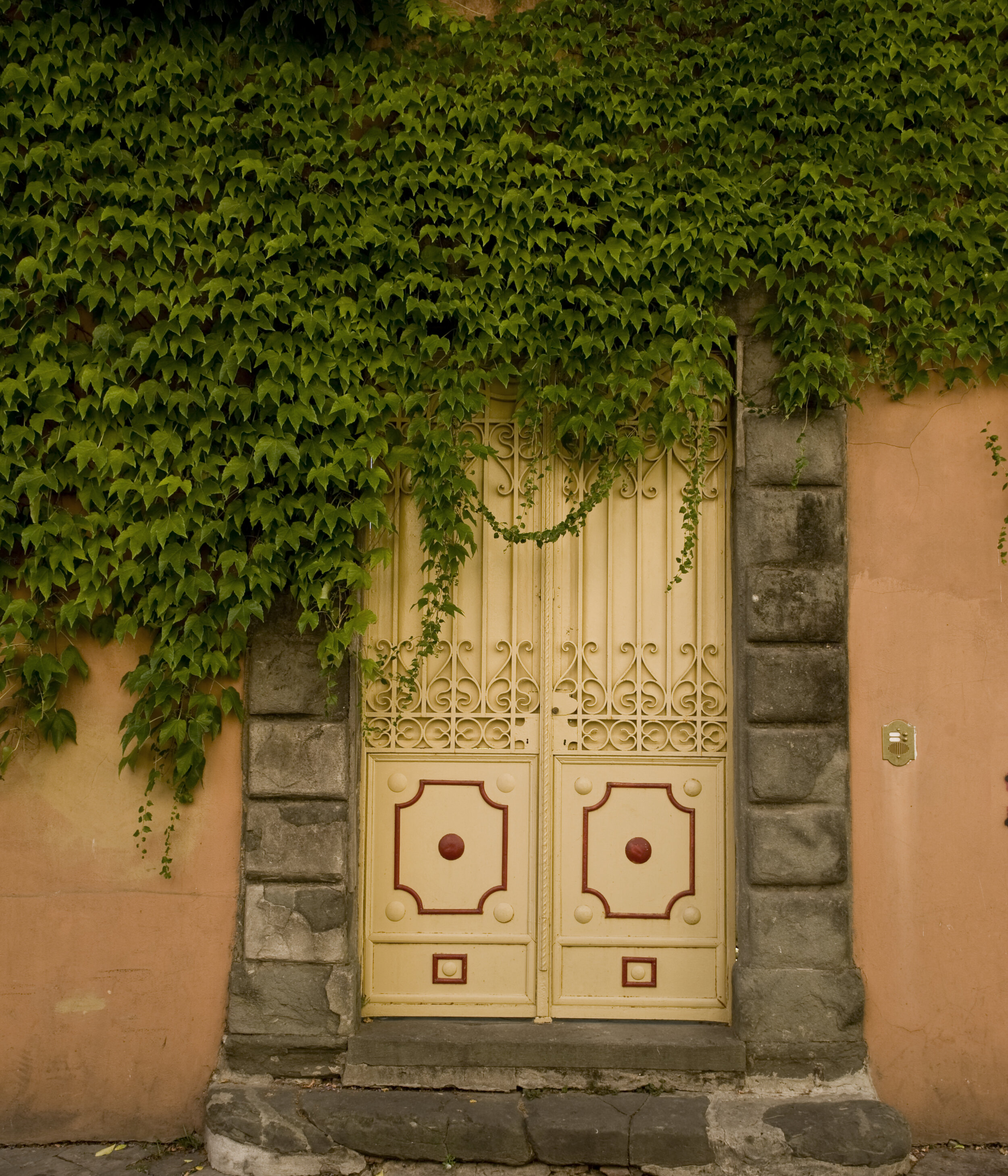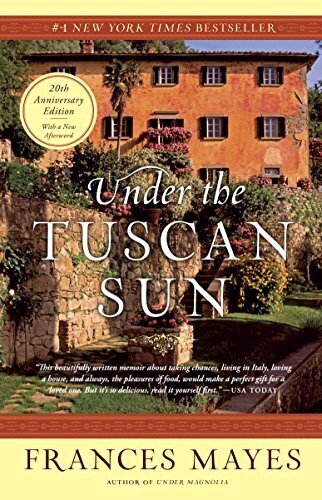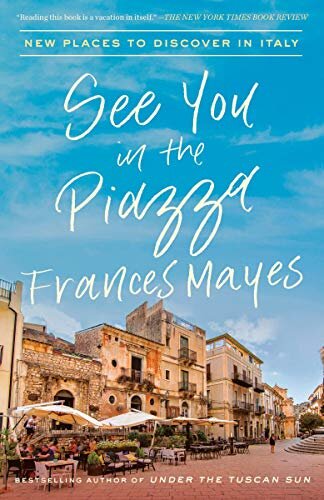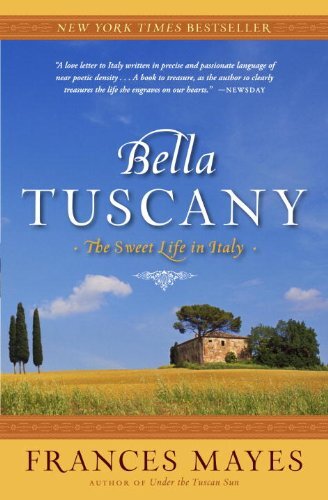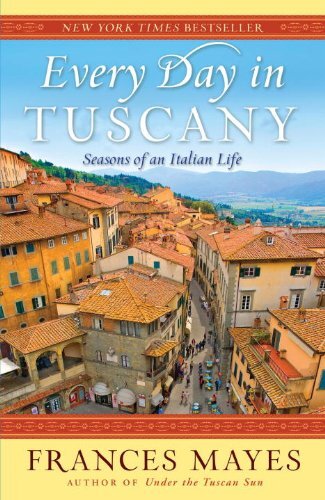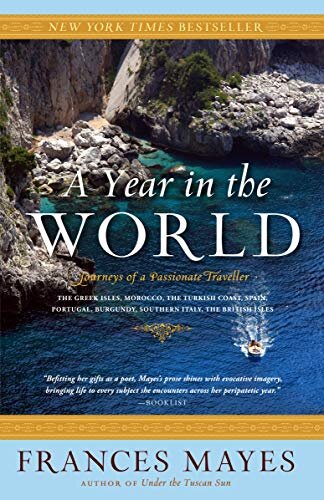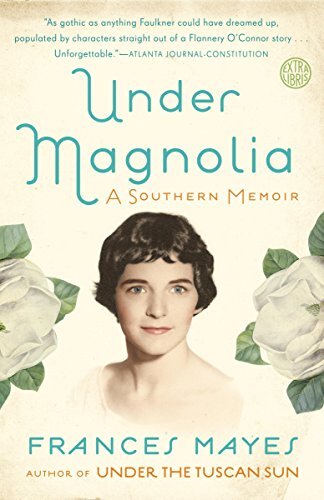Author Frances Mayes On Her Love of Italy And Her New Book ‘Always Italy’
Outdoor tables in the main piazza of Cremona are next to spectacular sand-colored arched buildings and an exquisite church. (Andrea Wyner)
Have you ever read a book that has left an indelible mark on your mind, heart and spirit? Personally speaking, that book has been Under the Tuscan Sun written by Frances Mayes. While the book was released 24 years ago—and was adapted into one of my favorite movies starring Diane Lane—it still resonates with not only myself but readers around the globe. What could be more romantic than going to a foreign country, like Italy, and restoring a historic villa and discovering a new life in the process?
I have gotten to talk to a handful of women who I admire and Frances is one of them. I couldn’t be more excited to learn firsthand about her love of Italy, her writing process and her newest book Always Italy. Co-written by travel writer Ondine Cohane, they do a deep dive into the 20 distinct regions of Italy from the snow-covered Dolomites, the languid coast of the Aeolian Islands to the more off-the-beaten-path towns of Abruzzo. While jetting abroad right now might not be possible, and if you are experiencing an epic amount of wanderlust (like me), I recommend picking up any book written by Frances, you’re tastebuds will be tantalized and you will be delightfully transported to Italy.
A painted door in the village of Lucca. (Andrea Wyner)
It’s so lovely to meet you. Before we begin, how are you doing during this time?
I can’t complain at all, we live in the country and we have a big garden and all of these nice places to walk. It’s just been a gift to have this time in a way. But you know on the other hand, you feel this free-floating panic and anxiety about the planet.
On Instagram, you have been sharing images of your garden in North Carolina—it’s so beautiful—you have an incredible rose garden.
The rose garden was started in the 1950s by this woman who collected a lot of rosebuds from churchyards. She had a garden of 350 different kinds of roses here and I have inherited it, it’s such a gift but also a kind of a burden because they are always dying so I have to replace them (laughs). They are older than David Austin, a lot of them don’t even have names—or names that I know of anyway—because she got them off old plantations or wherever she found them, she would take cuttings, then she got all of these French roses. It’s like wandering around in a Proust novel to look at the names of them, they have all of these old names.
How long have you lived in Hillsborough, North Carolina?
We have been here a long time now, like 12 years, but we usually spend half the year in Italy. I grew up in the South and at some point, I decided to move back, I’m really glad we did; we really love living here. Now this area is getting discovered, I think a recent article in Forbes called the Durham area the second-best place to live in the country. So it’s going to change, it already has quite a bit, but it’s still a really idyllic place to live.
The Mercato del Capo is a dizzying display of local vegetables and fruit in Palermo. (Andrea Wyner)
‘Under the Tuscan Sun’ has been one of the most impressional books for me, personally. You created a world that shows the magic of moving somewhere foreign and the beauty of restoration. Twenty plus years later, can you believe that the book still resonates with so many people?
It’s a phenomenon. It’s amazing to me that after so long, we still have dozens and dozens of people who come to our house every single day. Under the Tuscan Sun has been translated into 58 languages, so people come from all over the world. It’s been one of the gifts of my life. I have met so many people when I am coming or going, getting groceries out of the car or unloading plants—people are always there to chat, a lot of people would think that would be just awful, but it isn't. There is something really nice about someone who travels, because of a book or a movie, and who took the trouble to come there. I feel so incredibly lucky. Cortona became such a mecca for people to visit, it’s such a tiny town (less than 2,000 people) and it became the number two place, after Positano, to get married in Italy. From most of the letters I have received and the conversations that I have had, people want to make a change in their life, to do what they really want to do or what they really wanted to do before life happened to them.
Did you always have a sense of adventure instilled in you before you decided to move to Italy?
Absolutely, I grew up in a tiny town in south Georgia and from my earliest memories, I wanted to see the plane trees in Paris and wear dark sunglasses. I couldn't wait to get out of there and see the world. It is something innate; in those days, people didn't go to Europe. I didn’t know anyone who went there until I was maybe 16-years-old; it was just a dream. I think it came to me from reading because being in this small town, there wasn’t much to do. I would read my way around the library that’s how I got a sense of the bigger world out there that I wanted to see. In college, I majored in English but I also studied art and architecture and couldn't wait to get to Europe after that to see all of the things I had studied; when I got there, it was really the people and the place, the vivacity of life there that captured me. I have been back to Italy ever since, as many times as I possibly could.
Authors Frances Mayes (left) and Ondine Cohane in the garden of La Bandita Townhouse in Pienza. (Andrea Wyner)
It’s so interesting because I feel the same way about France. I first stayed there for an extended period of time when I was 15 and have kept going back too. I feel more at home there than in America.
That’s odd isn't it, to find a place that you feel at home when it couldn’t possibly be your natural home, but somehow it is. I am writing a book right now about home, what home means and how it happens. My brain is full of all of these ideas about home right now. It's also a natural subject to choose right now.
Did you rent a house before purchasing Bramasole?
I started renting houses and got the idea that I really wanted to put roots down there. I think the first house I ever rented was just outside Cortona. I planted some basil plants because I was going to be there a month. By the end, they were almost knee-high and they looked so happy there and I felt the same way. At that time, 35 years ago, no one did that to speak of. There was this little column in the New York Review of Books where professors going on sabbatical found places to rent, which is how I found that place, which was owned by a writer in London. I went to there with three other writers and just fell for it. There was a broken-down farmhouse in the distance and I started fantasizing immediately about restoring that house. My brain caught on fire there.
Do you feel more at home these days in Europe or America?
It's a total split; I feel very close to both places. I have told my husband, it’s kind of like being a bigamist and having two great husbands—how do you choose between them? I have lived in Bramasole for longer than I have lived anywhere in my life. But we love this farm in North Carolina and being back in the South just resonates, but it is so much better now than when I grew up.
After exploring the nearby monument of the same name, Armando al Pantheon is the go-to for classic pasta dishes and an old-school atmosphere. (Andrea Wyner)
Has your philosophy on life changed since you have spent such a long period of time in Italy? I feel like in Europe, there is more of a focus on the good life like food and family and enjoying that cup of coffee and not taking it to go.
My sense of time is what changed the most for me. It connects to those things you were mentioning about how people do take time and allow themselves to be spontaneous in their life. They are not dragged down, as much as we are here, by the clock thinking it’s Wednesday night, I have to go to work Thursday morning, so I am not doing anything. Well, Wednesday, Thursday or any night is a good excuse to go out and stay out late. People drop-in there, you have so many spontaneous encounters in a small town because there is this sense of the piazza being the living room of everyone's life. People share recipes at the frutta e verdura or have a coffee with someone. There is this lovely tradition where you have a coffee and you start to pay and the barista says, oh so-and-so paid for you, this kind of pay it forward thing with people buying each other's coffees. There is such a lovely sense of community.
We have that here in this small town in North Carolina, it's full of writers, photographers and artists, it's a great place in terms of that type of spontaneity but I never really experienced it that much living in San Francisco because people there are spread out. The other aspect of time in Italy is that they have been there for a long time, you talk about Hannibal coming over the Alps in 217 BC. Time just goes back there, think that's what gives the Italians just more of a perspective, maybe even a fatalism, we have seen these barbarians before. They just have a sense of being more at home in time. But that spontaneity, that sense of community that I talked about has made this quarantine so much more difficult for them. They are used to kissing 30 people a day and being in very close physical contact. Young kids love visiting their grandparents and so many things about normal life there were so severely curtailed. They have been heroic in this quarantine, I admire how they have handled it.
I really liked what you said about being sealed in time. I have such admiration and respect for Europe in that they respect the old; I feel in America we tear down the old and historic for something shiny and new. I can’t tell you how many petitions I’ve signed to save old buildings.
Yes, they don’t feel like they have to tear down the past to go forward. They are much better at bringing the past along with them into the future. They aren’t dragged down by the past, they aren’t mired in the past, they are very contemporary people, but you are so right, they don’t feel the need to turn down that building from the 1970s.
I’d love to learn more about your writing process. How do you know when an idea is big enough to turn into a book?
It’s a note taking process you could say. I have just come together with this idea about doing this book about home; I’ve been reading around that idea for about six months and thinking about it and dreaming about it without putting a pen to paper. I just started the actual writing in the past month or so. It’s a long mental process and then finally things start to coalesce but they are not totally coalesced yet, I don’t know what will hold this book together, but it’s a slow formation for this type of book. I have only written two novels but I find that process entirely different from writing non-fiction. I loved writing the books about Italy—they are memoirs because they are what happened, I don’t have to structure them or do more than edit, concentrate or elaborate things. I’m writing about things that actually happened. I just do the best writing I can without having to reach for over-arching structures the way you do in a book like this one I am working on or novels. I always thought I would write a ton of novels but wow, they are really hard. It is all the details that are daunting with fiction.
The Veneto encompasses a sliver of the Italian Dolomites. A beautiful drive north from Venice is the picturesque valley of the Cadore. (Sebastian Wasek/robertharding.com)
What has been the hardest book to write?
I think the hardest was my memoir Under Magnolia about growing up in the South because it involved family and I knew that I was going to be getting into trouble with them. I also wrote a textbook, The Discovery of Poetry with 350 poems in it—writing all of that advice on reading and writing poetry was quite difficult. See You in the Piazza was just an amazing amount of fun, where I traveled to little known places in Italy. I just adored that book because I was down in Puglia on a vacation with my husband and we were going to all of the places we knew we should see there but we were finding that we absolutely loved these towns that no one had ever heard of. This teeny town, Orsara had a medieval bread oven in the town that was still being used. I was very enchanted with the out of the way places and decided to write a whole book about them.
In ‘Always Italy’ you explore in incredible depth the twenty distinct regions of Italy. Was it at all intimidating to cover so much?
It was mostly exciting. It came out of See You in the Piazza, where I went to 13 different regions, but my appetite for all of Italy was whetted by the process of writing about those little known places. I have never really wanted to go to some of the regions of Italy for ignorance I guess, I didn’t know about them. Ondine, my co-writer, who is based in Pienza, were thrilled because some Italians hadn't even been to all the regions. We did not travel together, we put this book together separately, although we met together a dozens of times. I fell absolutely in love with the places I never thought I wanted to go like Molise, Basilicata and Calabria. I felt traitorous to Cortona because I found so many places that I wanted to live. I loved Trentino and Trento, I could move there. Also, the little towns in the Veneto like Este. As you know, Italy is just endless and you need 18 lifetimes to explore it.
How long did it take you both to write from start to finish?
We worked on it for almost two years. We wanted it to not just be a guide book, but a cultural companion. So there is a lot in there about literature and writers in different regions. When I travel, one of the things that I always do is find out the writers in that area and try to read them. I think that you get such a sense of place. The other thing that we wanted to do and was an overarching principle in this book was we wanted to present Italy now, not just Italy of the past or as a historic repository of history, but what's’ going on in art, architecture, design, fashion, hotels and cuisine. We really wanted it to be always Italy but Italy right now.
Rolling out handmade tortelli. (Matteo Carassale/SIME/eStock Photo)
If someone is traveling to Italy for the first time, what would you say are your top places that offer a distinct taste of the divine country?
I loved Venice, first of all it was the first place that I ever fell for. I think that if you can go to Venice and Rome off-season those would be my top two. I would recommend someone traveling for the first time to balance out seeing the main sites with going to little out of the places. Even some place like Capri, which is overrun a good part of the year, if you can go there off-season it is the most divine place to walk of any place imaginable. I would also recommend Puglia and Tuscany.
What is one region in Italy that surprised you the most?
I think the Dolomites were so surprising. It was one area that I wasn't too keen on. I was like okay mountains, mountains are beautiful, okay, but Igot there and I was just so dazzled by it, it was just stupendous. The beautiful green clear lakes, so cold; the changing light on these facades of the mountains—purple, lavender, gold, the shifting light. Those gorgeous upland meadows and the Tyrolean architecture with the tumbling geraniums. I was channeling Heidi, from when I read it as a child. I love the Dolomites and I cannot wait to go back there. In the book, one emphasis is on outdoor activities. You don’t traditionally think of going to Italy for the outdoors, but it was being there that just flipped me I want to go there every year and go on these amazing hikes, go to tiny towns and eat that hearty food and experience that aspect of Italy that was totally new to me.
Bovio restaurant's cheese selection is a delicious introduction to Piedmont's signature varieties. (Andrea Wyner
What is your ideal meal in Italy?
Pasta, I am pasta crazy. I started a whole cookbook on pasta which I never quite finished because it became so overwhelming. Pasta is the perfect food because it can be as simple or as elaborate as you can imagine. I love making those big pasta shells stuffed with lobster and shrimp with a lovely creamy sauce but also, if you just make a simple pasta with a little pasta water, garlic, and Parmigiano, it's just divine.
How often do you travel back to Cortona?
We come and go, it depends on what is going on here with my writing and my books. We are always there for the olive harvest, we have to be there, we have a little olive oil business, Bramasole Olive Oil, it’s the best, it just won the gold medal in the national olive oil competition, we just found out. We have 700 trees, some are ancient, but others we planted, and we do our own harvesting, as my husband says, it is hand-picked by poets. That time of year, everyone is out picking olives in October. We are also there in the spring. Since we are on the east coast, we can get over there a lot easier. We usually go three to four times a year staying one to four months each time.
What do you look forward to most when you return to Italy in the spring?
I love my house and walking around on the land, checking on the olives—each has a name. We visit our neighbors and start having great meals outside. Then after two or three weeks, I’m ready to start traveling. For the past four years, we’ve been traveling quite a bit.
Italy is...
diverse. From north, in the highest peak of the Dolomites down to Modica, in the south of Sicily, it's the most diverse country in the world. I cannot imagine reaching the end of it.
DISCOVER MORE BOOKS BY FRANCES MAYES
ROSE & IVY participates in affiliate link marketing. If you click on a link and purchase something we recommend, we will receive a commission. Thank you for supporting ROSE & IVY!
Images courtesy of National Geographic. All are copyrighted and used with permission.


